calsfoundation@cals.org
Stamps (Lafayette County)
| Latitude and Longitude: | 33°21’55″N 093°29’43″W |
| Elevation: | 308 feet |
| Area: | 3.05 square miles (2020 Census) |
| Population: | 1,258 (2020 Census) |
| Incorporation Date: | April 11, 1898 |
Historical Population as per the U.S. Census:
|
1810 |
1820 |
1830 |
1840 |
1850 |
1860 |
1870 |
1880 |
1890 |
1900 |
|
– |
– |
– |
– |
– |
– |
– |
– |
– |
1,021 |
|
1910 |
1920 |
1930 |
1940 |
1950 |
1960 |
1970 |
1980 |
1990 |
2000 |
|
– |
2,316 |
2,564 |
2,705 |
2,405 |
2,552 |
2,591 |
2,859 |
2,478 |
2,131 |
|
2010 |
2020 |
|
|
|
|
|
|
|
|
|
1,693 |
1,258 |
|
|
|
|
|
|
|
|
Stamps was developed late in the nineteenth century as a lumber town situated on the railroad. The childhood home of Maya Angelou, Stamps was one of the more prosperous cities of southwestern Arkansas in the late twentieth century, although it has seen some decline in the twenty-first century.
Prior to white settlement, southwestern Arkansas was home to the Caddo. Even after Lafayette County was established in 1827, only a few families claimed land in the area that would become Stamps. Last names of early settlers include Calhoun, Tatom, Norwood, Stamps, Vaughon, Lande, and Baker. The Stamps family built a small sawmill in the late 1860s, which was later acquired by the Bodcaw Lumber Company. The area did not begin to flourish, though, until the St. Louis Southwestern Railway—commonly known as the Cotton Belt—extended a line across Lafayette County in 1882.
Hardy James Stamps came to Lafayette County from Georgia in 1880 to operate the Bodcaw lumber mill. When a post office was established at the settlement surrounding the mill in 1888, it was named for Stamps; the first postmistress at that location was Ella Crowell, Stamps’s daughter. The Louisiana and Arkansas Railroad was incorporated in Arkansas in March 1898 by William Buchanan of the Bodcaw company located in Stamps. The town was initially home to the principal shops of the railway. Crossing the Cotton Belt, it extended south to Spring Hill, Louisiana. In 1902, the line was also built north to Hope (Hempstead County), linking the area to the St. Louis–San Francisco Railway (the Frisco). Stamps was incorporated in 1898.
The Bodcaw sawmill expanded until it was reputedly the largest sawmill for yellow pine in the world. The mill pond, Lake June, covered nearly 100 acres. The company store offered groceries, men’s and women’s clothing, and hardware; the hardware division even sold coffins. A church, built at the end of the nineteenth century, was shared by several congregations (Baptist, Methodist, and Presbyterian) until the Presbyterians erected their own building in 1902. The Baptists and Methodists eventually built churches as well. A Masonic lodge was constructed in 1898. The building included an auditorium with a stage designed to accommodate traveling shows. The Bodcaw Bank opened in 1903. A newspaper, the Lafayette County Democrat, began publication in 1905.
Eventually, the lumber business played out, and Stamps’s businesses began to relocate. The offices of the Louisiana and Arkansas Railway were moved to Minden, Louisiana, in 1923. The railway was later acquired by the Kansas City Southern Railroad. A school for African Americans, funded in part by the Rosenwald Fund, was built in 1929. Known as the Lafayette County Training School, it continued until 1969, when schools in Stamps were desegregated. The building was then used for five years as the Ellis Middle School of Stamps’s school district.
Arkansas Power and Light (AP&L) built a $3 million plant in Stamps to generate electricity by burning natural gas that was extracted nearby. In 1945, the plant had a generating capacity of 30,000 kilowatts. In 1952, AP&L spent $6 million to add a 135,000-kilowatt generator to the facility. That same year, the McAlester Fuel Company drilled an oil well near Stamps, opening the North Stamps oil field. The Arkansas Game and Fish Commission acquired Lake June and maintains it as a stocked lake for fishing.
Red River Aluminum opened a recycling plant in Stamps in 1988. The only business of its kind in Arkansas, the plant received loans from the Arkansas Economic Development Commission, the Arkansas Development Finance Administration, and Southwest Arkansas Planning and Development. The plant operated for ten years before closing in 1998; the company declared bankruptcy the following year. The abandoned site was a significant source of pollution, until the Environmental Protection Agency secured $2 million in 2000 to clean up the Red River site.
The city has two buildings on the National Register of Historic Places: the Presbyterian church, built in 1905, and the Lafayette County Training School. Children in Stamps attend the Lafayette County School District, with an elementary school in Lewisville (Lafayette County) and a high school in Stamps.
Maya Angelou, an internationally celebrated author, poet, actress, and political activist, was born in St. Louis, Missouri, in 1928 but spent much of her childhood in Stamps, where she was raised by her grandmother and her uncle. Angelou’s autobiographical novel, I Know Why the Caged Bird Sings, is partially set in Stamps. In June 2014, following Angelou’s death, the town renamed its only park in her honor. Stamps was also the home of Angelou’s mentor Beulah Flowers, and the birthplace of her son William Harold Flowers, a lawyer, minister, and civil rights activist in the state.
In October 2017, days after citizens of Stamps elected Brenda Davis as the town’s first Black mayor, two historical monuments were stolen from Maya Angelou Memorial Park: a placard with Angelou’s name and a bronze bust of three Black men who had served in the state legislature following the Civil War.
For additional information:
Knight, Wilda, ed. “Lafayette County, Arkansas,” Pieces of Its Past and Its People. Lewisville, AR: Lafayette County Historical Society, 2002.
McGuire, Kim. “Red River Saga Far from Finished.” Arkansas Democrat-Gazette, December 9, 2001, pp. 1B, 6B.
Ross, Margaret Smith. “Census Count Proves Costly to Stamps.” Arkansas Democrat Magazine, September 7, 1952, p. 8.
Steven Teske
Butler Center for Arkansas Studies
 Maya Angelou
Maya Angelou 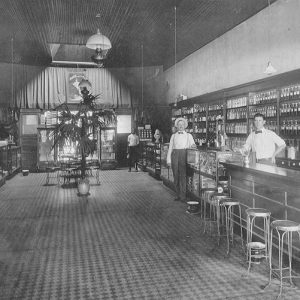 Baker Drugs
Baker Drugs 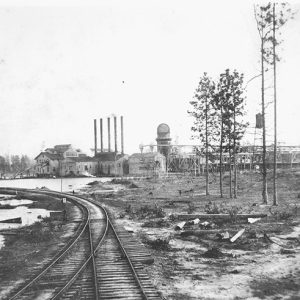 Bodcaw Lumber Co.
Bodcaw Lumber Co. 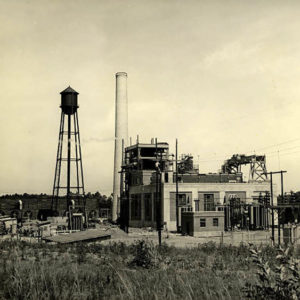 Couch Power Plant in Stamps
Couch Power Plant in Stamps 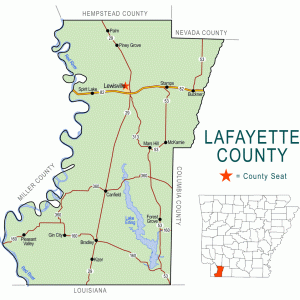 Lafayette County Map
Lafayette County Map 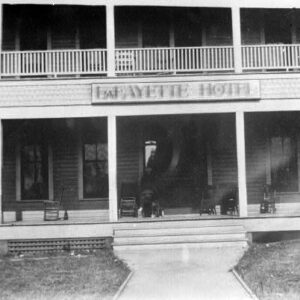 Lafayette Hotel
Lafayette Hotel 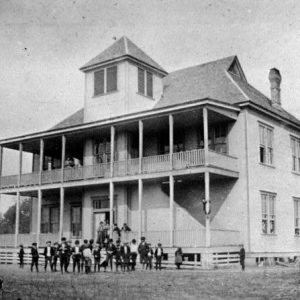 Stamps High School
Stamps High School 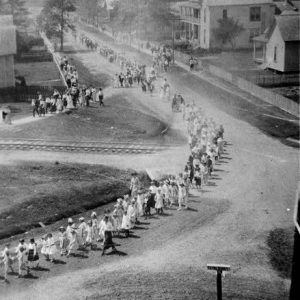 Stamps Liberty Loan Parade
Stamps Liberty Loan Parade 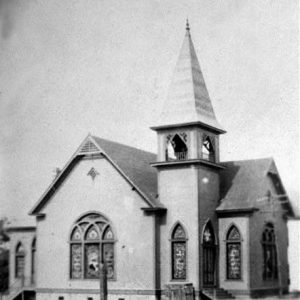 Stamps Presbyterian Church
Stamps Presbyterian Church 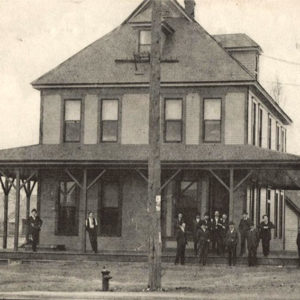 Stamps Railroad Office
Stamps Railroad Office 




James Monroe Stevens should be listed in the history of Stamps. I and many others feel that his role shouldn’t be left out of the history pages of Stamps. There’s a section in this history about sanitation. My great-grandfather Mr. Stevens was the very first to do this job with horse and a wagon. I feel it should be noted as well.